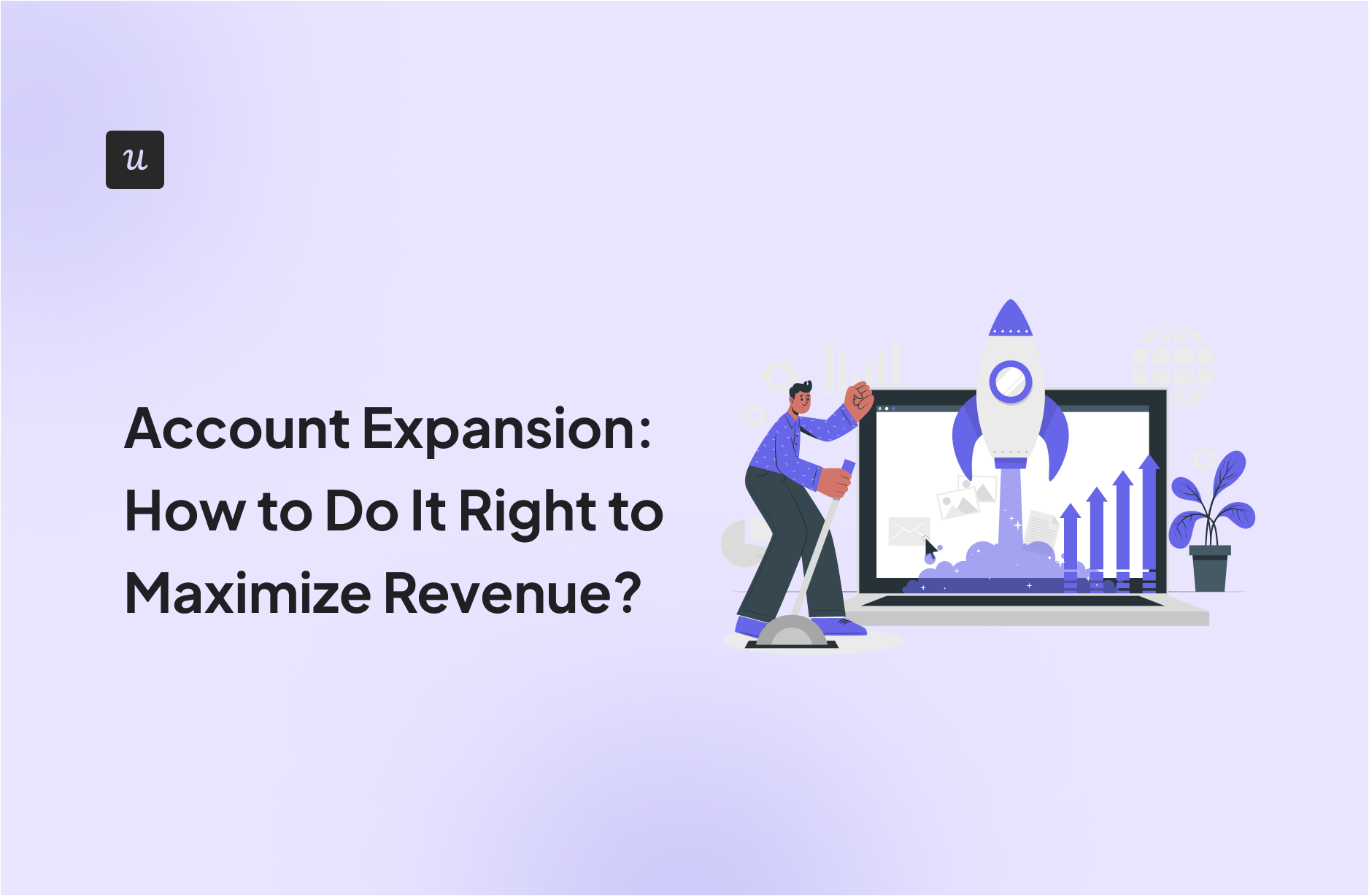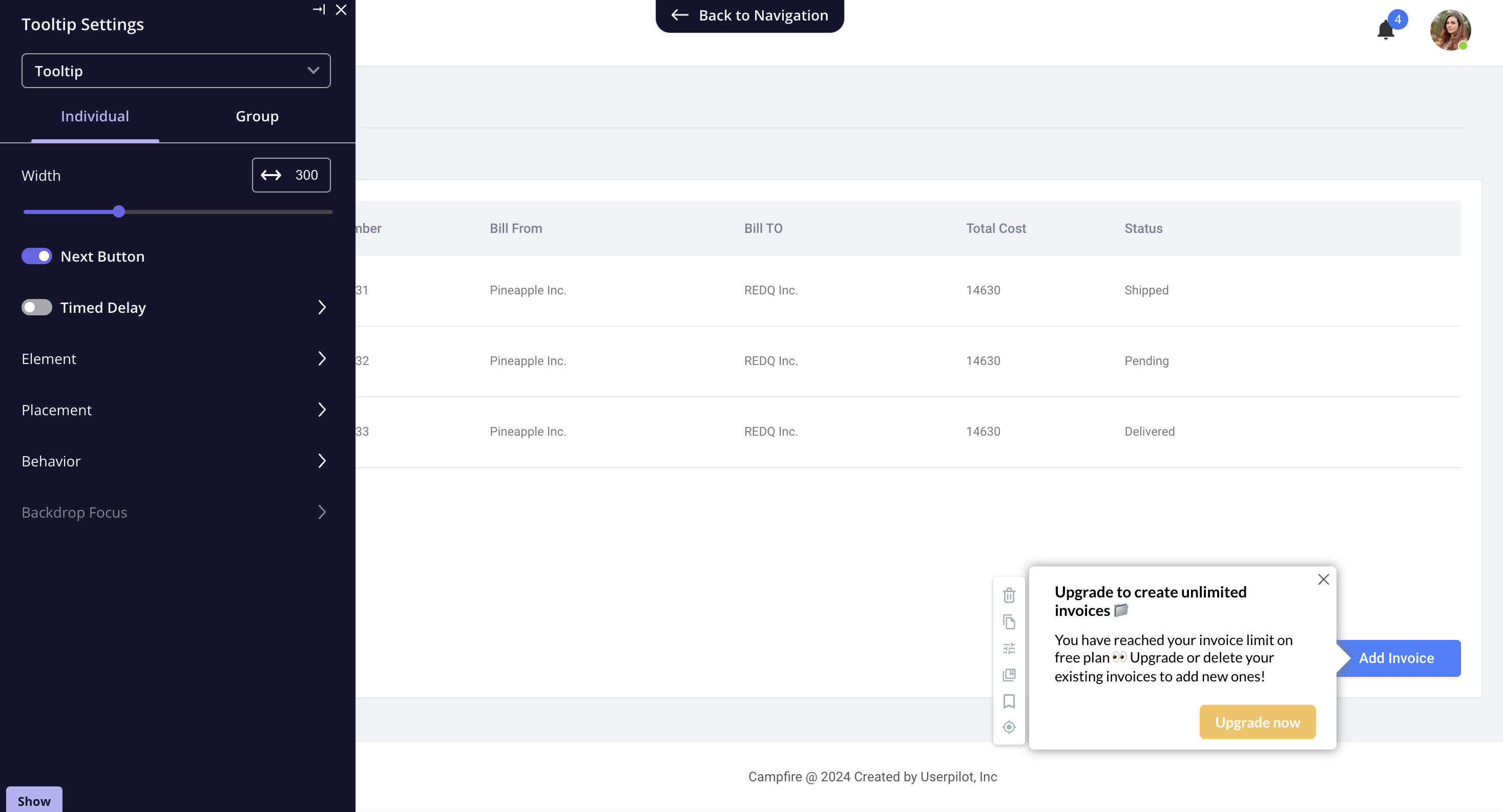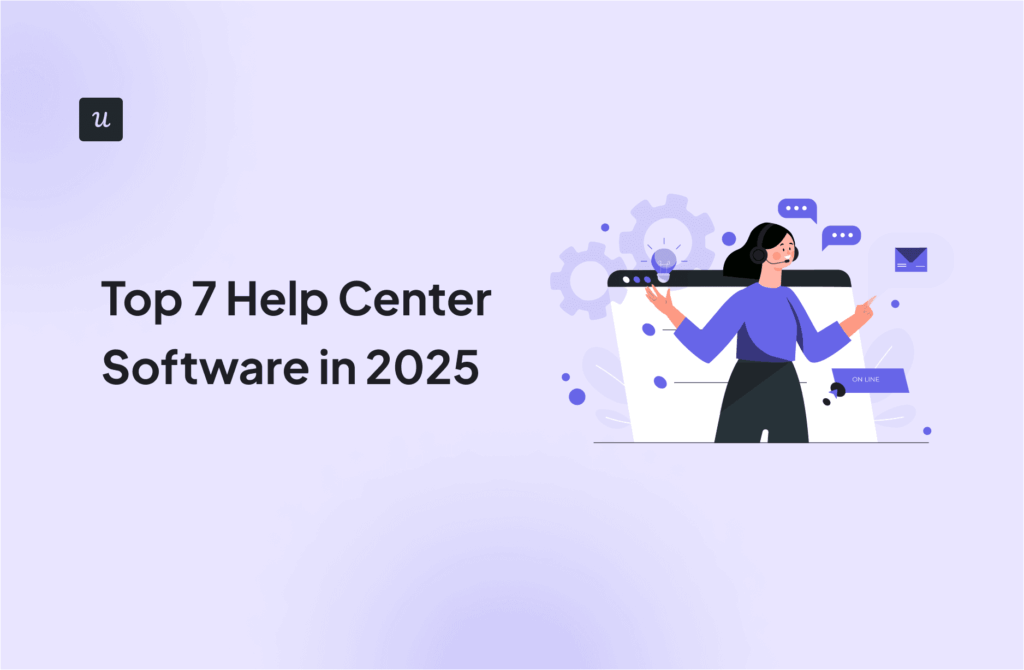
Did you know that account expansion can drive significant growth for your SaaS business? Instead of putting all your eggs into your acquisition basket, you can drive expansion revenue growth through upsells.
In this article, you’ll learn:
- What account expansion is, why it matters, and how to calculate it.
- How expansion and upselling are related to each other.
- How sales, customer success, and marketing teams handle account expansion, and the role automation can play in it.
Get The Insights!
The fastest way to learn about Product Growth, Management & Trends.
What is Account Expansion?
- Account expansion refers to the revenue growth of existing accounts through upselling or cross-selling to your current customers.
- 3 Common types of SaaS expansion strategies include Upselling, Cross-selling, and Add-ons.
- Upselling refers to selling more features to existing customers. Cross-selling refers to selling complementary products. Add-ons are additional products that only work with the base product.
- While both sales and customer success teams can handle account expansion, they have to take different approaches due to having different types of relationships with a customer.
- Customer success teams can better identify the additional products or features that suit customer needs by using data without compromising customer retention.
- Marketing automation plays a key role in customer expansion strategies for a SaaS company, allowing you to communicate with users instantly and solve scalability issues when it comes to expansion.
- In-app behavior and product analytics can help you identify the perfect expansion opportunity and deliver personalized in-app communication, making it easier for the user to upgrade right away.
- Userpilot is a product adoption platform that helps you build contextual upselling experiences. Using its advanced analytics features, you can also gain insights into your product performance and the impacts of your account expansion strategies.
- Interested in retaining existing customers and driving account expansion? Book a Userpilot demo now!
What is account expansion in SaaS?
Account expansion refers to the revenue growth of existing accounts. You can do so by upselling or cross-selling to your current customers.
Account expansion allows companies to achieve revenue growth without acquiring new users. It also helps increase customer lifetime value and build customer loyalty.
Why is it important to drive account expansion?
SaaS professionals have always focused on the growth achieved by acquiring new customers. Slower growth often leads to an increase in acquisition efforts. This represents one core belief – more new customers means more revenue.
But the real picture is quite different.
Turns out, it is easier to sell to existing customers than to acquire new ones. The probability of selling to current customers stands at 60-70%, while the success of acquiring new users stands at 5-20%.
When you take high customer acquisition costs into account, this figure gets even more discouraging.
If you shift your focus to expansion revenue growth, it can lead to negative churn. Having a negative churn means that your generated expansion revenue from upsells and cross-sells exceeds the revenue lost due to churn each month.
This implies that not only is it easier to sell to an existing customer, but it’s also more profitable to do so.
Account expansion strategies for SaaS
SaaS expansion strategies include Upselling, Cross-selling, and Add-ons. Each has its own set of advantages and disadvantages.
Here’s what you should know about these three SaaS expansion strategies.
Upselling
Upselling is a basic expansion strategy that refers to selling more features to existing customers. In the case of SaaS products, you can have a customer upgrade from a free plan to a paid plan or have a paid customer opt for a more expensive plan.
For example, Slack has a 10k message limit on its free plan. When the customer reaches that limit, it sends them a message to upgrade to a paid subscription- a classic way of upselling.

Cross-selling
Cross-selling refers to selling complementary products. These are the ones that work as standalone products but are suitable for the same persona.
For example, Atlassian offers a range of products catering to product and project management teams. Each of the products has its purpose clearly stated, which makes it easier for the customer to pick the one that suits their needs.
If a customer is using the Jira software and needs a solution that makes collaboration among team members easier, they can opt for Trello.

Add-ons or bundles
Add-ons refer to additional products that only work with the base product. You cannot use these as standalone products. Add-ons are sometimes called bundles when you combine additional products into one package to address a specific need.
For example, Zoom offers optional add-on plans that allow licensed users to add additional products like audio conferencing and cloud storage. It also offers features like increased participant capacity and premier support.

Who is in charge of driving account expansion?
Let’s get one thing straight first – there’s no single team, be it sales, marketing, or customer success, that is unanimously considered best suited to handle account expansion.
This depends on the SaaS company – its business model and internal structure.
Both sales and customer success teams within a company are capable of handling expansion. However, they have to take different approaches to it, as they have different types of relationships with the customers.
Because of the sales process, the real strength of a sales team lies in customer acquisition rather than customer expansion.
On the other hand, customer success teams better understand customer goals and connect with existing customers. This allows them to better identify the additional products or features that suit customer needs and drive growth.
One other thing to consider is scalability, where both sales and customer success teams fall short. In such cases, marketing automation plays a very important role.
How marketing can contribute to account expansion efforts with automated in-app messaging
You can’t just rely on your sales team or customer success team to reach out to users and ask them to upgrade. It’s not scalable.
For SaaS companies, it’s important to communicate contextually.
You need to showcase the benefits of an upgrade or add-on at the right time. This ensures you reach the user at a time when it’s most relevant for them. If you rely on in-person outreach, there’s no guarantee that a sales or customer success team member will be free to reach out at that exact moment.
Automation plays a big part in customer expansion strategies for SaaS businesses, as it allows you to communicate with the user instantly.
With the help of in-app behavior and product analytics, you can identify the perfect expansion opportunity and deliver personalized in-app communication, making it easier for the user to upgrade then and there.
1. Tell users what they’re missing out on by using freemium instead of a paid account
If you want users to pay more, you need to remind them what they are missing out on. Loom does a brilliant job at that.
Once your trial period ends, Loom greets you with a message that concisely summarizes the account status and the benefits of an upgrade.

This message sets the right expectations. It tells you there have been changes to your account and where you stand now. Then, it outlines what you’re missing out on by continuing to use Loom on the freemium plan. Loom also offers you a chance to review the changes and see what upgrade options are available.
2. Be contextual: send the right upgrade message at the right time
One of the biggest benefits of marketing automation is the ability to reach customers with the right message at the right time.
You might want to push a feature upgrade that comes as an add-on. Don’t flood them with notifications. Instead, trigger a message in a context where the add-on should solve the user’s needs and explain its value to them.
Intercom is a great example in this case. If a user is building a series and wants to add a premium element, they get a message that offers them an upgrade and communicates its value.

Intercom also removes the upgrade friction by adding the “Get feature” button right there, allowing the users to follow through with the update right when they need it.
3. Offer limited time trial of your paid features to users
Offering limited-time trials of paid features is a strategic approach aimed at enticing users to explore premium functionalities within a defined timeframe. You can segment customers who may benefit from this trial and send them such offers.
Limited-time trials provide users with a hands-on experience of the additional features or premium offerings. This experiential engagement allows users to understand the value these features bring to their workflow or user experience.
By monitoring user interactions during the trial period, you can tailor follow-up communications and promotions based on their engagement level, increasing the chances of successful upsells.

4. Trigger an upgrade prompt when users reach the feature usage limit
To capitalize on user engagement, trigger upgrade prompts when users reach feature usage limits. This ensures that users are prompted at a point where the value of an upgrade is evident, encouraging them to explore higher-tier plans.
You can also analyze how users respond to upgrade prompts, the features they prioritize, the conversion rates, etc. Such data helps you refine product offerings and optimize upgrade strategies.
How sales teams drive account expansion from an existing customer base
Customers avoid sales, usually because they don’t like being sold to, but if your sales team is in charge of account expansion in your company, here are two tips on getting it right.
1. Listen to your customers
Don’t get too caught up in reaching your quota. Empathize with the customer, understand the desired outcome, and find out what’s stopping them from achieving success.
Pushing your own agenda won’t get you far. Instead, listen to what the customer needs. Try to guide them towards the right path for their growth.
Your sales team can use in-app surveys to understand which features are crucial for the customer’s success and where they perceive gaps in functionality.

2. Sell value, not the product
Once you know the desired outcome your customers are looking to achieve by using your product, you need to nudge them. Focus on explaining how an add-on or upgrade could help them get that value faster or easier.
Make it clear what’s in it for them. Sell the value of the product instead of trying to sell its features. The same add-on might deliver different outcomes and benefits for different types of customers.
For example, you can tailor an in-app upgrade slideout to communicate value customers will miss out on if they don’t upgrade like this:

If you can convince them that an upgrade is more valuable than what it costs, customers won’t hesitate to pay for it.
How customer success managers can leverage existing customer data to drive account expansion
Customer Success Management teams focus on building a strong connection and trust with customers. So, when you’re looking to drive expansion, a customer success manager should follow the following best practices and not risk destroying the existing trust that causes customer engagement and retention to take a hit.
1. Understand where the customer is in the journey
Pushing an add-on or upgrade at the wrong time can be disastrous for customer satisfaction. It will lead customers to perceive you as a company that cares less about them and more about the money they pay.
This erodes trust between you and your customers, which puts you in a difficult position to recover from.
First of all, you need to understand where the customer is in the user journey. You should highlight an expansion opportunity only when it helps them get the desired outcome.
As customers grow and the desired outcome changes, you can easily find new opportunities for upselling.
2. Be proactive and reach out to customers
You can use data to identify the right moment to push upsells to your customers. This will allow you to proactively reach out and, in turn, reinforce the message that you care about your customers. It will also help you boost trust among them.
One thing data does very well is personalization. You can make full use of product usage and customer data to personalize upsell offers, which increases the likelihood of customers following through with the purchase.
For example, you can segment your power users and analyze the conversion path. Seeing how your power users navigate toward conversion points will help you tailor in-app guidance to set up your free users for contextual upsells and cross-sells.

Conclusion
Steve Jobs once said that “A lot of times, people don’t know what they want until you show it to them”. This is why upselling (if done right) can help you significantly boost your revenue.
This doesn’t mean you should not pay attention to new customer acquisition. Acquiring new customers is crucial to the growth of your customer base.
However, you should not ignore the potential expansion revenue growth you can achieve through customer expansion strategies like upselling. To make it scalable, you can also use marketing automation and in-app messaging to communicate with users any time you want.
Want to use marketing automation for SaaS account expansion? Get a Userpilot Demo and see how you can scale your expansion efforts effectively.









